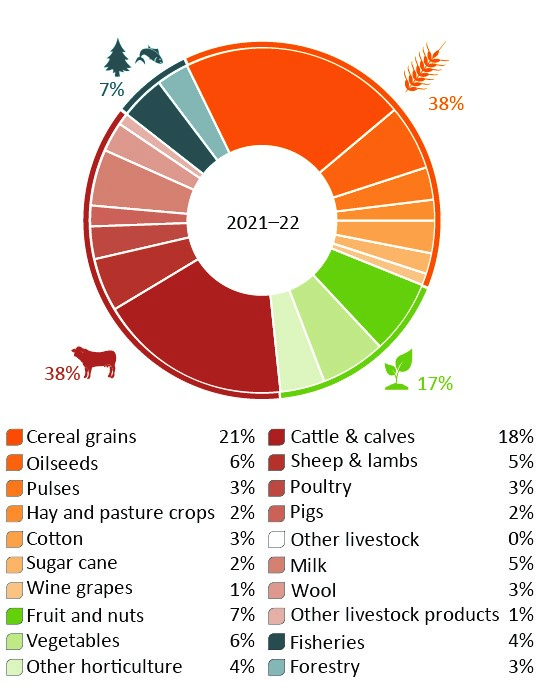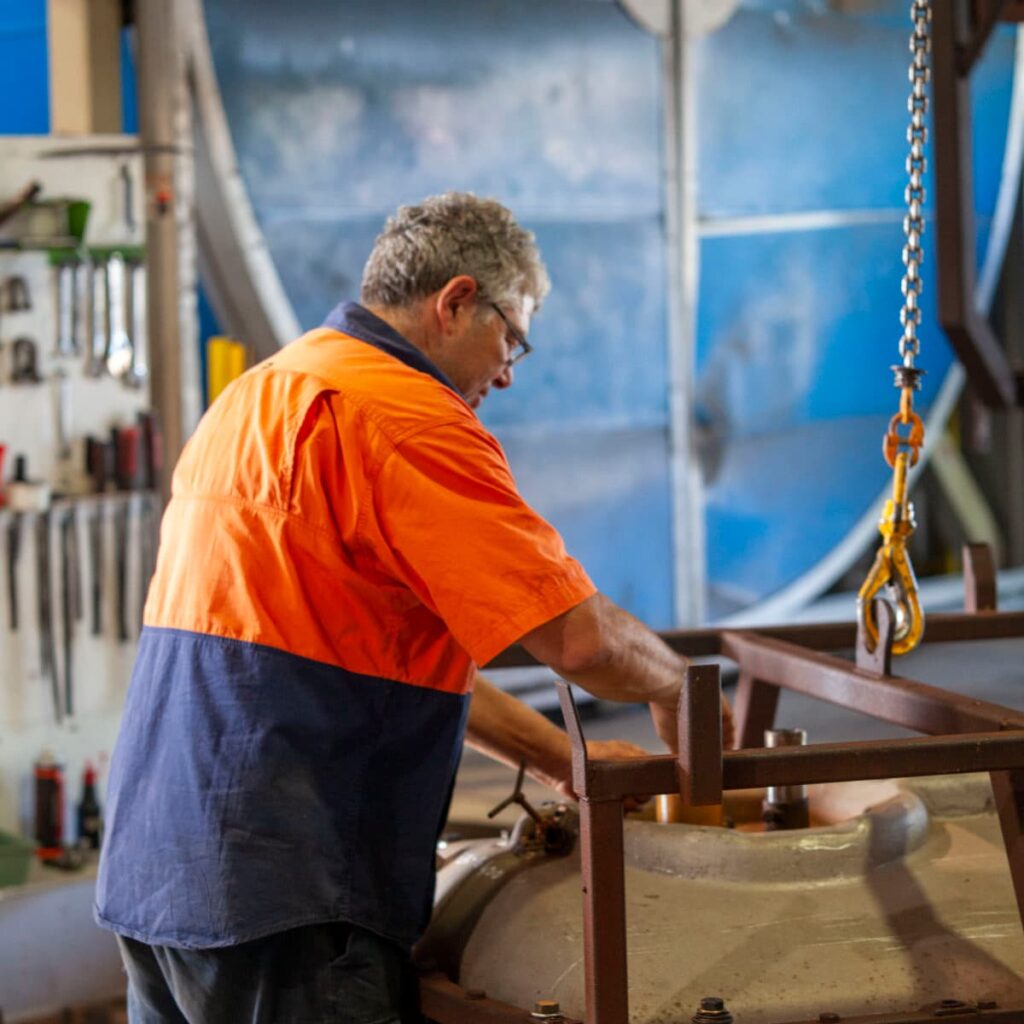Explore Australia’s Agricultural Scene in 2023
Home / Explore Australia’s Agricultural Scene in 2023
- globaltanks
- June 27, 2023
- 4 minutes
Australia’s agricultural sector holds significant importance, as demonstrated by the following statistics:
- Agriculture occupies 55% of the total land area in Australia, excluding timber production, amounting to 427 million hectares as of December 2020.
- It accounts for 24% of the water extractions in the country, with agriculture utilizing 2,809 gigalitres in the year 2020-21.
- In terms of economic contribution, agriculture represents 11.6% of Australia’s goods and services exports in the fiscal year 2021-22.
- It contributes 2.4% to the value added (GDP) and employs 2.5% of the workforce in the year 2021-22.
The composition of agricultural practices in Australia is influenced by various factors such as climate, water availability, soil characteristics, and proximity to markets. Livestock grazing is prevalent across the country, encompassing a wide range of regions. On the other hand, cropping and horticulture activities are typically concentrated in coastal areas or nearby regions.
(Source Snapshot of Australian Agriculture)
Lack of labour in horticultural producers creates great strain on producers with bumper crops being at threat of not financially not been fully realised in 2023.
“Four major factors will impact Australian agriculture in the first half of 2023, with seasonal conditions, production costs, trade conditions and global economic headwinds all featuring prominently in the findings”….
We see farm input costs persisting as a key issue in 2023 across every sector. Tight global fertiliser supply combined with high fuel and labour costs will weigh on grower margins, however, a generally weaker Australian dollar in comparison to the first half of 2022 should lift the overall competitiveness of our agricultural exports…
High production costs are expected to remain an ongoing challenge for producers with input costs and the cost of labour forecast to remain elevated while visitors on working holiday visas remain well below pre-pandemic levels.”
Andrew Smith, Rural Bank Head of Agribusiness Development (Source Production costs to bite as farmers look to improve conditions in 2023)
After a prolonged 3-year drought on the east coast, the agricultural sector experienced a remarkable turnaround in 2020, with consecutive years of record-breaking production. Within a single season, many agricultural regions transitioned from extremely poor conditions to highly favourable ones. Moreover, this positive trend has been accompanied by exceptionally high commodity prices for nearly all of Australia’s primary agricultural products. In real terms, accounting for consumer price inflation, the gross value of agricultural, fisheries, and forestry production has surged by 59% over the past two decades. Starting at around $59 billion in 2002-03, it reached approximately $93 billion in 2021-22. (Source Snapshot of Australian Agriculture)
Below is a strong break down of the Agriculture, fisheries and forestry market segments Currently in Australia by Commodity for 2021-22

(Source Snapshot of Australian Agriculture)
Farming embracing technology and digitization to make farming viable
The agricultural industry continues to face various challenges, including labour shortages, global food security concerns, and unpredictable weather patterns, despite recent successes. To overcome these obstacles, the sector is increasingly relying on technology and digitization as viable solutions.
- Adoption of Precision Agriculture: Australian farmers are embracing precision agriculture techniques, which utilize advanced technologies like GPS, sensors, and data analytics to optimize farming practices. This includes precision planting, variable rate application of fertilizers and pesticides, and targeted irrigation management.
- Internet of Things (IoT) in Farming: IoT devices are being employed in Australian farming to monitor and control various aspects of agricultural operations. These devices collect data on soil moisture, temperature, weather conditions, and livestock health, enabling farmers to make data-driven decisions and improve productivity.
- Remote Sensing and Satellite Imagery: Remote sensing technologies, including satellite imagery and drones, are being used to monitor crop health, detect pests and diseases, and assess soil conditions. This data helps farmers identify potential issues early on and take preventive measures, leading to better crop management.
- Farm Management Software: Digital farm management software is becoming increasingly popular among Australian farmers. These platforms provide tools for planning,
- record-keeping, inventory management, and financial analysis. They help streamline farm operations, enhance decision-making, and improve overall efficiency.
- Robotics and Automation: Robotics and automation technologies are making their way into Australian farming. Automated machinery, such as robotic milking systems and autonomous tractors, are reducing labour requirements and increasing operational efficiency.
- Data Analytics and Artificial Intelligence: Data analytics and AI technologies are being applied to agricultural data collected from various sources, including sensors and satellite imagery. These tools help farmers gain insights into crop performance, disease prediction, yield forecasting, and resource optimization.
- Vertical Farming and Controlled Environment Agriculture: With limited arable land and increasing urbanization, Australian farmers are exploring vertical farming and controlled environment agriculture techniques. These methods involve growing crops indoors, using artificial lighting, hydroponics, and precise environmental control to maximize productivity in limited space.
- Blockchain for Supply Chain Transparency: Blockchain technology is being utilized to improve transparency and traceability in the agricultural supply chain. It enables farmers to track their produce from farm to fork, ensuring authenticity, quality control, and fair trade practices.
- AgTech Startups and Innovation Hubs: Australia has witnessed a surge in AgTech startups and innovation hubs, fostering collaboration between farmers, researchers, and technology developers. These initiatives drive the adoption of new technologies and facilitate knowledge-sharing within the agricultural community.
- Upskilling and Training: To embrace technology and digitization, Australian farmers are engaging in upskilling and training programs. These initiatives aim to educate farmers on the effective utilization of new technologies and equip them with the necessary skills to navigate the digital landscape of modern agriculture.
The Team at Global Rotomoulding Enjoy working with a number of OEM companies and supporting them with parts for some amazing modern machinery and technology. Global Rotomoulding has been working to increase our range of liquid fertilizer cone bottom tanks and cartage tanks that support all on-farm storage and cartage needs.

